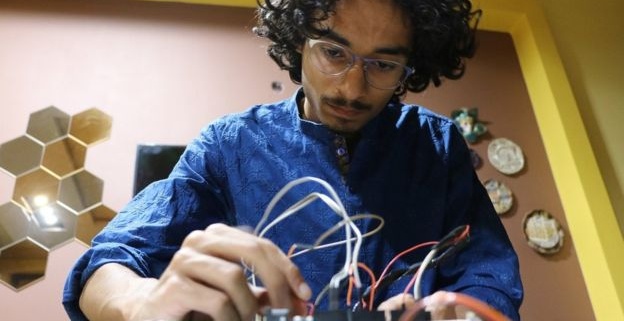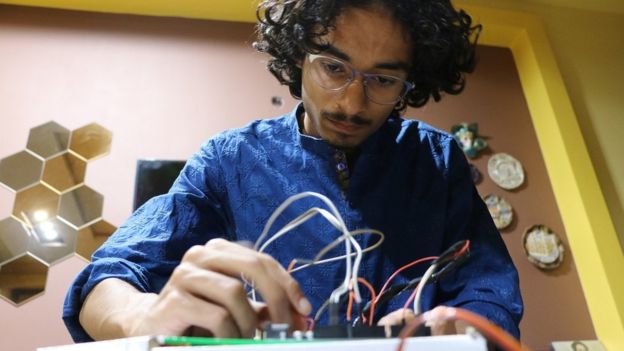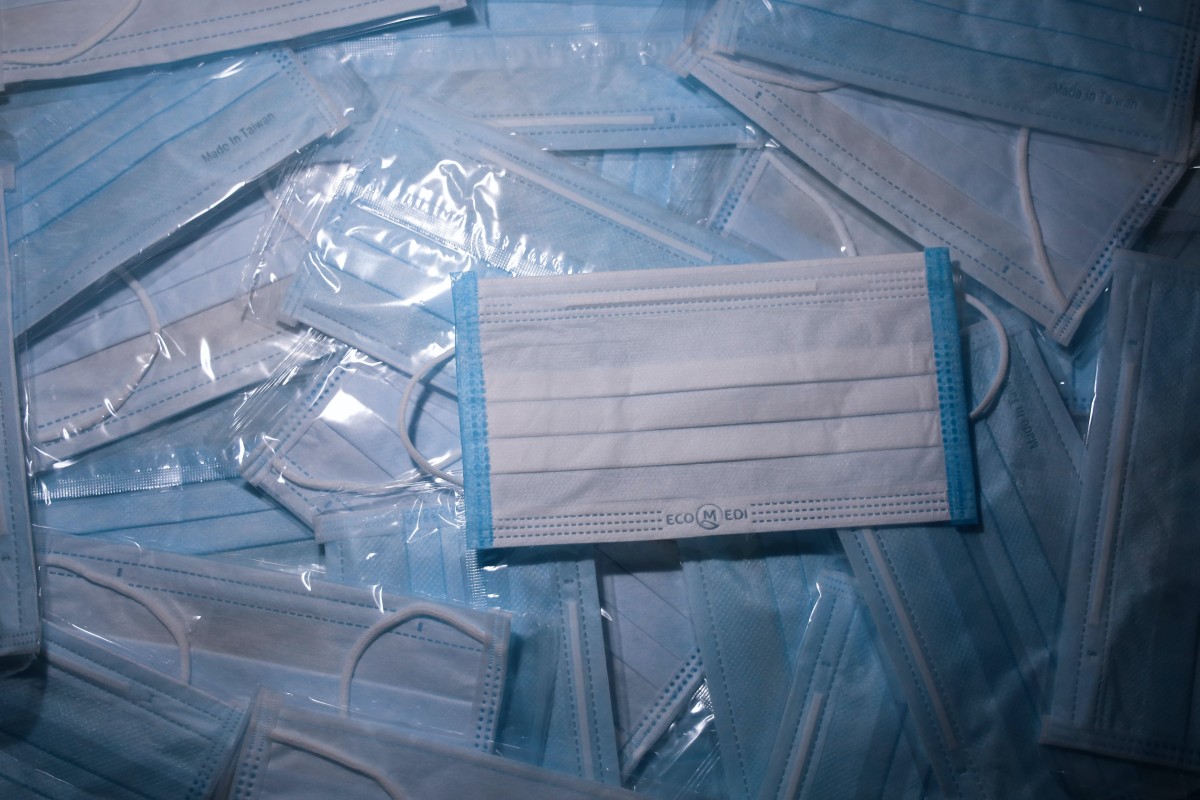17-year-old Pakistani Scientist Garners International Praise
by Aysha Qamar
As one of the first Pakistani’s to participate in the International Young Physicists’ Tournament, then 16-year-old Muhammad Shaheer Niazi, replicated and provided a visualization of an ‘electric honeycomb’ creating international praise.
Upon returning from the International Young Physicists’ Tournament in Russia in 2016, Niazi said he decided to get published after receiving encouragement from his mother.
Presenting his research as any professional scientist would, Niazi developed photographic evidence of charged ions creating the honeycomb and published his work, earlier this month, in the journal Royal Society Open Science. The Royal Society Open Science is a journal that publishes research in the fields of Mathematics, Engineering and Science.
17-year-old Niazi has been named one of the youngest recognized scientists after his recent publication.
“We have to add something new [to existing knowledge] to get published and I introduced two new factors in the electric honeycomb phenomenon,” Niazi told reporters.
“Newton was 17 [years-old] when his first research [paper] got published in the same journal,” Naizi added.
Naizi said the attention his research received, particularly after its discussion in the New York Times, surprised him the most.
“It was a very small thing, and only four to five research papers had been written on it, so I did not think it would get such publicity,” Naizi said.
While physicists have known the phenomenon of electric honeycomb for decades, the Lahore residing high school student was the first to photograph the movement of ions that form the honeycomb alongside recording the heat found on the surface of oil. No one has done this before.
According to the New York Times, “an electronic honeycomb is what happens when certain kinds of electrically charged particles travel between a pointy electrode and a flat one but bump into a puddle of oil along the way.”
“Its what happens as natural forces work to keep an electric charge moving in an interrupted circuit, the New York Times said.
Niazi’s project has received international praise from various scientists and scholars including his own inspiration.
“I think it’s outstanding for so young a scientist to reproduce these results,” Dr. Alberto T. Pérez Izquierdo, a physicist at the University of Seville in Spain said.
Dr. Izquierdo’s work in 1997 inspired Niazi’s project.
Niazi encourages students to use the internet to supplement their learning due to the lack of quality of education in some regions of the country.
“There are online courses that I have been taking since I was very young,” he told reporters, suggesting that those interested in learning beyond the classroom take free online courses from websites like Coursera and EdX.
While Naizi did not expect all the media attention he is now getting, he is glad he was able to make his country proud. He now hopes to win the Nobel Prize again for Pakistan and is looking to continue his work and education at a prestigious university, like the Massachusetts Institute of Technology (MIT).



















2017
1,340 views
views
0
comments